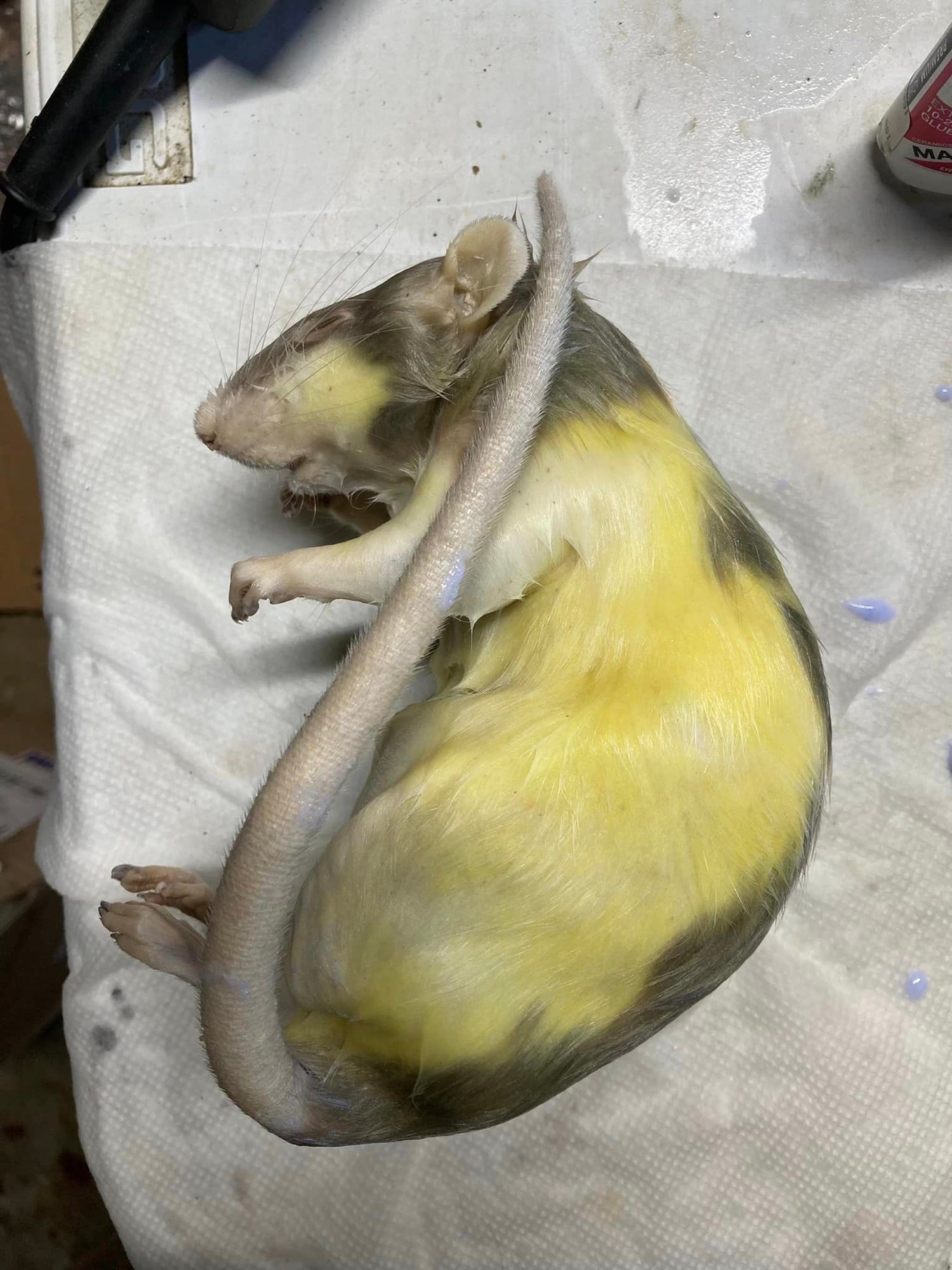
Yellow Fur in Rodents
The problem of yellowing fur in preserved rodents, especially white rats, is a puzzling issue encountered during the preservation process. While it's more common in male rodents, females can also develop a yellow tint in their fur. The primary cause is the oils secreted by the rodents during preservation, which can gradually change the color of the fur.
To prevent this problem, one effective approach is to wash the fur thoroughly before starting the preservation process. Using detergent or Dawn soap during this pre-fixation cleaning helps remove the oils responsible for the eventual discoloration. This proactive step can reduce the chances of yellowing in preserved specimens, maintaining the original fur color more accurately.
For specimens that have already undergone fixation and display yellowing, a bleaching technique can be considered as a potential solution. It's important to note that in this context, "bleaching" refers to a process similar to hair bleaching, not the use of household bleach. A mixture of powder lightener, commonly used in hair treatments, along with a hair developer, can be carefully applied to the affected fur. Reports suggest that this mixture, when used correctly, may help alleviate the yellowing issue in preserved rodents.
Alternatively, researchers and collectors dealing with yellowed specimens might explore the use of toner and developer, commonly used in hair care. Similar to the powder lightener method, this approach may help neutralize or reduce the yellow tint in the fur, providing another option for addressing the discoloration.
Taking a proactive approach to prevent yellowing involves removing the anal glands from rodents before the preservation process. These anal glands are believed to contribute to the secretion of oils that cause fur discoloration. By opting for anal gland removal, researchers and collectors can potentially minimize the chances of yellowing, preserving the original fur coloration.